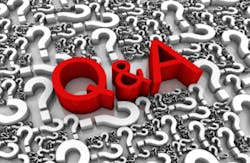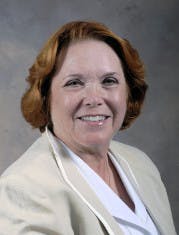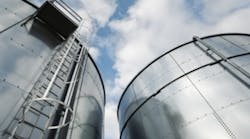The U.S. Federal Communications Commission (FCC) has adopted rules geared specifically to level probing radars (LPRs) that allow these devices to operate anywhere in the country without a license.
The Measurement, Control & Automation Association (MCAA) worked with the FCC to provide information to the technical office within the FCC, which crafted a Notice of Proposed Rulemaking in 2012. The FCC action amends the existing rules to account for LPR special technical characteristics, which posed previous obstacles to FCC approval.
Specifically, the order modifies Part 15 of the FCC rules for level probing radars to operate on an unlicensed basis in the 5.925-7.250 GHz, 24.05-29.00 GHz, and 75-85 GHZ bands, and revises the measurement procedures to provide more accurate and repeatable measurement protocols for these devices.
Cynthia Esher
President, MCAA
Cynthia Esher is the president of MCAA and has been associated with MCAA or its predecessor organization, the Scientific Apparatus Makers Association, since 1978. Here Ms. Esher responds to questions from Flow Control about the FCC’s new rules for LPRs. The following Q&A is a teaser for a more in-depth article on the FCC’s LPR ruling scheduled to appear in the March edition of Flow Control magazine.
Q: How long was MCAA and its member companies working with the FCC to develop the revised ruling? Can you provide as much detail/background as possible to explain how the negotiation started and evolved leading up to the issuing of a revised ruling?
A: The issue was first brought to the attention of MCAA’s staff and Board in late summer 2009. A number of companies decided to work together to review the existing rules of the FCC relevant to level probing radar equipment. They held their first meeting in October 2009 and the first contact with the appropriate FCC official was made at that time.
In January 2010, a meeting was held with the FCC technical office to outline the issue. One member was working through a legal counsel to obtain a waiver from the rules specific to their products and the group decided to piggyback on that effort.
Funds were raised and the services of Mitchell Lazarus were engaged in March 2010. Lazarus had long and deep experience in dealing with FCC regulatory changes and he was familiar with the product issue of the LPRs.
Throughout 2010 members worked together and with Lazarus to draft a technical Memorandum with a proposal for workable rules, including procedures for testing devices for compliance. In December of that year, the technical office of FCC informally approached the counsel and said that they would like to issue a Notice of Proposed Rulemaking and asked for our input for their consideration. Our Memorandum on the issue was submitted to the FCC informally in January 2011.
There was some limited conversation between their staff and our legal counsel throughout that year, but not a lot of "debate." The FCC Notice of Proposed Rulemaking was issued in April 2012 (more than a year later). The typical process ensued with comment periods for the public, and responses. The new rules were not published until January 2014. We are still awaiting the final publication in the Federal Register.
READ ALSO: FCC Revises Rules Regulating Frequency Bands for Radar Level Measurement Devices
Q: Why is the new FCC ruling important for radar level devices?
A: Previously, the methodology for measuring radio-frequency emissions made it virtually impossible for LPRs to meet the requirements unless they were contained (primarily used in tanks). The new Rules allow LPRs to be used in the U.S. virtually anywhere in a number of frequency bands.
The new measurement procedures ensure more accurate and repeatable protocols for the devices. And the new rules partially harmonize the U.S. technical rules for such devices with European standards—this provides us with more competitive opportunities. Manufacturers can now achieve better economies of scale by allowing the marketing of the same LPR device for a variety of radio frequency level-measuring applications.
Q: What factors contributed to the need for a revised ruling on frequency bands for radar level devices?
A: Customers increasingly requested these products, available in other parts of the world. Obtaining individual waivers to sell in specific applications or in individual frequency bands was very difficult and time consuming, which limited the ability of manufacturers to meet the needs of their customers.
Q: The MCAA PR announcing the revised ruling noted that “special technical characteristics” posed previous obstacles to FCC approval. Can you describe what these technical characteristics are and why they posed an obstacle?
A: The previous FCC rules for unlicensed devices, including radars, required low transmitter power and a relatively uniform signal that lacks extreme peaks of energy. An LPR signal is inherently "peaky" and, for that reason, did not comply. Moreover, the permitted transmitter power was inadequate for many LPR applications—an LPR signal is aimed downward. Energy emitted in a horizontal direction, where it might cause interference to others, comes from radio energy scattered off the material being measured (and also some stray horizontal energy signal from the antenna). The total potentially interfering signal off to the sides is much lower than the transmitter power. The new rules take these facts into account in permitting a usefully high transmitter power, without significantly increasing the risk of interference to other spectrum users.
Q: Does the new ruling provide a long-term solution, or will there need to be further revisions going forward?
A: There were other frequency bands that members would have liked included in the new rules, but there were several reasons why those bands could not be accommodated. While it is possible that certain manufacturers will seek some additional remedy through the FCC, we believe that the new rules will allow the majority of manufacturers to provide LPR instrumentation to customers for use in a wide range of applications without licensing from the FCC.
Cynthia Esher can be reached at [email protected] or 757-258-3100.Further technical information about the FCC Rules can be directed to legal counsel, Mitchell Lazarus of the firm Fletcher, Heald & Hildreth. He can be reached at [email protected] or 703-812-0440.
For insight into the FCC process, contact Julius Knapp, Chief of the Office of Engineering & Technology, Federal Communications Commission [email protected] or 202-418-2470.
Jake Mastroianni is the managing editor of Flow Control magazine.



